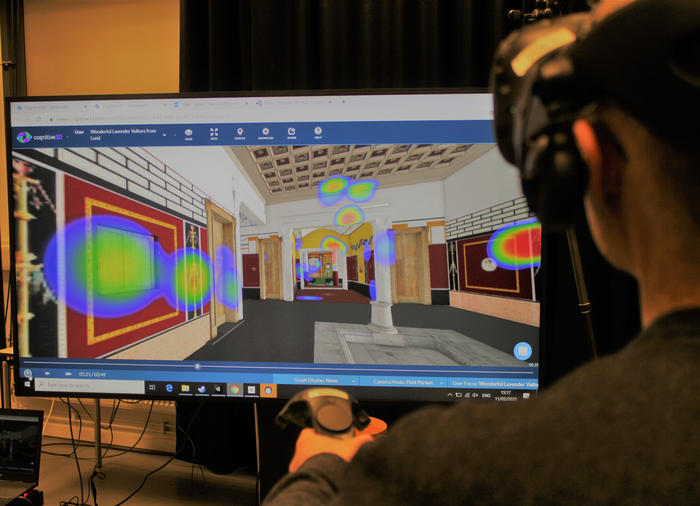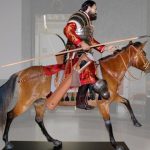How did visitors experience the domestic space in Pompeii?
Researchers at Lund University in Sweden have used virtual reality and 3D eye-tracking technology to examine what drew the attention of the visitors when entering the stunning environment of an ancient Roman house. The team recreated the House of Greek Epigrams in 3D and tracked the gaze of study participants as they viewed the home.
Unlike today, Roman houses were not a place of refuge from work. Work and daily activities were intermingled during the day. Houses were designed to communicate the personal power and status of the owner and his family. The visual impression was so important that architects moved architectural elements such as columns to frame views, added fountains as focal points, or simply decorated the space by imitating those elements when it was not possible to build them.
“By tracking how people view the house, we can get closer to unlock what was in the mind of those that designed it. What messages are being conveyed, even in the smallest detail? We found many ways in which the owner was conveying a sense of power and wealth to visitors”, says Giacomo Landeschi, researcher at the Department of Archaeology and Ancient History, Lund University.
The House of Greek Epigrams was destroyed in the eruption of Mount Vesuvius in AD 79. It had a room completely covered with wall paintings accompanied by Greek inscriptions that gave the house its name.

The house was elaborately designed and featured wall paintings that were partially visible from the outside, but with details that only close visitors could see, for example. There was also erotic art where natural light illuminated the work primarily at appropriate times. Certain visual and architectural elements echoed a tension between Greek and Roman cultures at the time.
A follow-up study will analyse the results in more detail.
The researchers say that the unique nature of the research could be further enhanced by adding other sensory experiences, such as auditory involvement, in the future.
“This study shows that we can now not only recreate the physical space but also understand the actual experience of the people at the time. This is an entirely new field of research for archaeology, that opens up new possibilities,” concludes Danilo Marco Campanaro, PhD candidate at the Department of Archaeology and Ancient History, Lund University.
Re-viewing Pompeian domestic space through combined virtual reality-based eye tracking and 3D GIS, Antiquity, DOI: 10.15184/aqy.2022.12
ABOUT THE STUDY:
The study marks a significant advance in the use of Virtual Reality in archaeology, where its heuristic potential is employed to make more advanced spatial analysis. It set out to establish a methodology to accurately record information about participants’ gaze and attention and analyse it. To do this, the researchers used a 3D eye-tracker, a game engine, and Geographic Information Systems.
Eye-tracking
“Eye tracking is a sensor technology that can detect a person’s presence and follow what they are looking at in real-time. The technology converts eye movements into a data stream that contains information such as pupil position, the gaze vector for each eye, and gaze point. Essentially, the technology decodes eye movements and translates them into insights that can be used in a wide range of applications or as an additional input modality”. Source: https://www.tobii.com/group/about/this-is-eye-tracking/)
Geographic Information Systems (GIS):
“A geographic information system (GIS) is a system that creates, manages, analyzes, and maps all types of data. GIS connects data to a map, integrating location data (where things are) with all types of descriptive information (what things are like there). This provides a foundation for mapping and analysis that is used in science and almost every industry. GIS helps users understand patterns, relationships, and geographic context. The benefits include improved communication and efficiency as well as better management and decision making”. Source: https://www.esri.com/en-us/what-is-gis/overview.
Game engine
A software framework that offers a suite of tools and features to build games and any kind of interactive experience (e.g Virtual Reality) for multiple platforms.
Press release from Lund University on how visitors experienced the domestic space in Pompeii.


